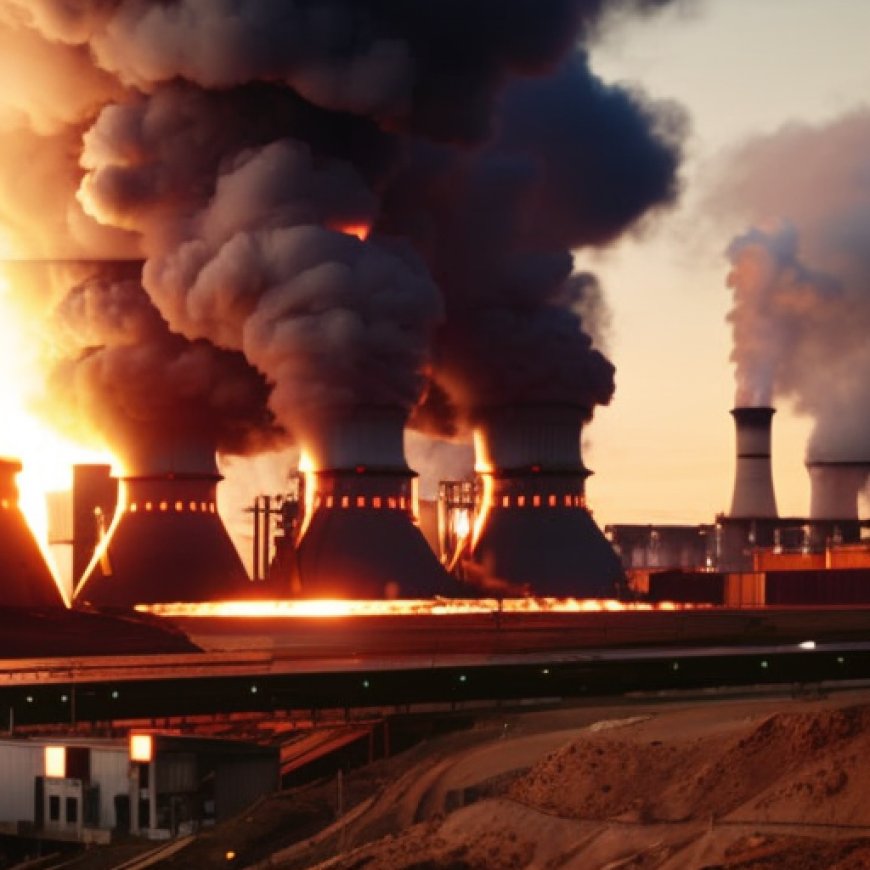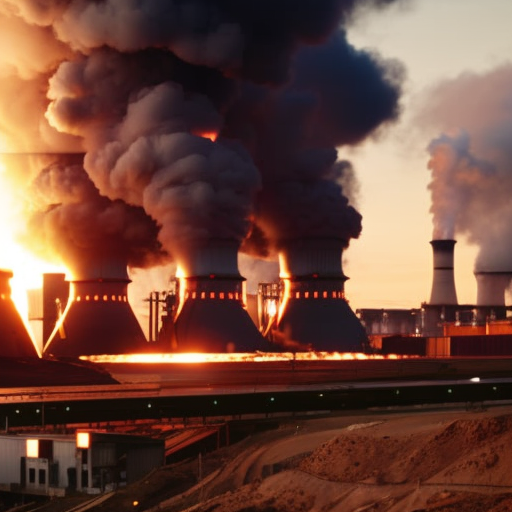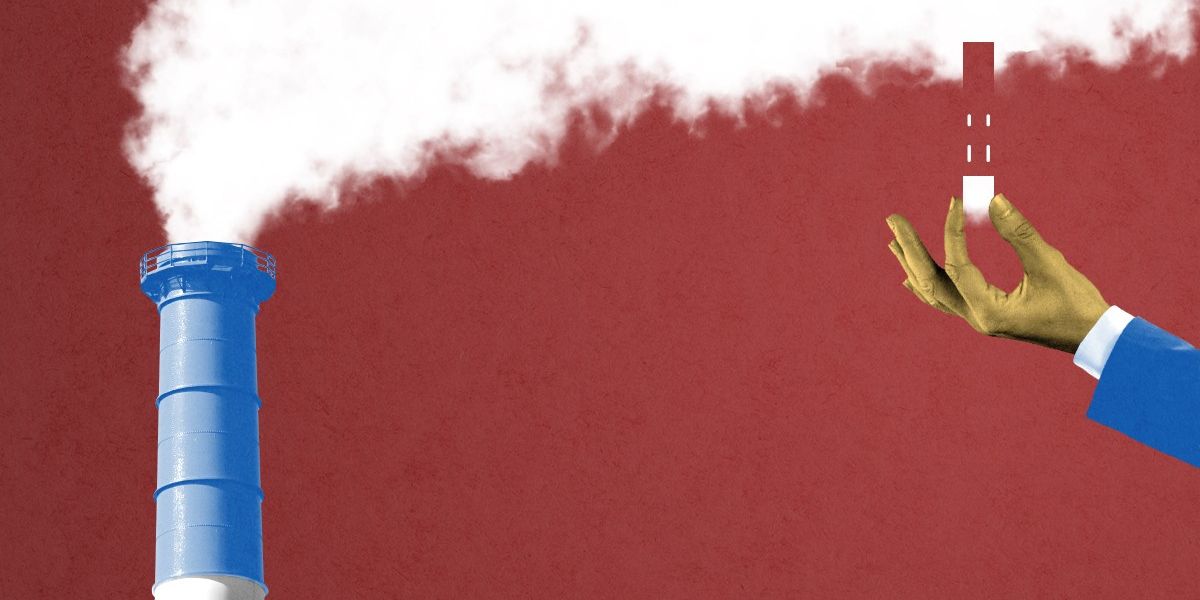U.S. Steel Is Trying Carbon Capture. Experts Aren’t Impressed.
U.S. Steel Is Trying Carbon Capture. Experts Aren't Impressed. Heatmap


Sustainable Development Goals (SDGs) and U.S. Steel’s Carbon Capture Project

Introduction
Last week, the Department of Energy announced $6 billion in awards to help clean up some of the most greenhouse gas-intensive industries in the U.S., including $1.5 billion to transform iron and steel manufacturing. U.S. Steel, one of the biggest American steelmakers, was not among the recipients.
U.S. Steel’s Carbon Capture Project
On Wednesday, U.S. Steel made an announcement of its own: It is signing a 20-year agreement with CarbonFree, a Texas-based company, to capture carbon dioxide from Gary Works, the largest integrated steel mill in the country, and turn it into a marketable product. The $150 million project is the first to capture and utilize carbon from an American steel plant at a commercial scale.
Addressing Sustainable Development Goals
Gary Works releases an ungodly amount of carbon into the air each year — more than the entire state of Vermont. CarbonFree will use its technology, known as SkyCycle, to collect 50,000 tons of CO2 from the plant per year and transform it into high-grade calcium carbonate, a valuable ingredient for the food, pharmaceuticals, paint, and plastics industries.
This project aligns with several Sustainable Development Goals (SDGs), including:
- SDG 7: Affordable and Clean Energy
- SDG 9: Industry, Innovation, and Infrastructure
- SDG 12: Responsible Consumption and Production
- SDG 13: Climate Action
Criticism and Future Plans
While this project is a step towards achieving U.S. Steel’s pledge of net-zero emissions by 2050, critics argue that capturing less than 1% of the plant’s annual emissions is insufficient. Some competitors of U.S. Steel, such as SSAB and Cleveland Cliffs, received $500 million each from the DOE for more transformative green steel projects.
U.S. Steel has stated that this project is a first step in exploring the scalability of carbon capture technology. CarbonFree executives also believe that this project can serve as a stepping stone to larger initiatives.
Challenges and Opportunities
The steel industry contributes about 8% of global energy-related emissions. U.S. steelmakers, including U.S. Steel, face the challenge of decarbonizing their operations, particularly blast furnace steel mills that rely on coal-intensive production methods.
The advantage of the SkyCycle project is that it doesn’t require U.S. Steel to make significant investments in their plant. CarbonFree owns and operates the carbon capture equipment, generating revenue from the sale of chemicals produced. This business model allows U.S. Steel to reduce emissions without incurring substantial costs.
However, experts raise concerns about the scalability of this project and its impact on the industry’s emissions. The market for high-grade calcium carbonate, the product generated by CarbonFree, is limited. Additionally, critics argue that carbon capture projects like this may prolong reliance on coal and fail to address other harmful pollutants emitted by steel mills.
Conclusion
U.S. Steel’s carbon capture project with CarbonFree represents a small but significant step towards reducing emissions in the steel industry. While there are criticisms and challenges to address, initiatives like this align with the SDGs and contribute to the global effort to combat climate change and promote sustainable development.
SDGs, Targets, and Indicators Analysis
1. Which SDGs are addressed or connected to the issues highlighted in the article?
- SDG 7: Affordable and Clean Energy
- SDG 9: Industry, Innovation, and Infrastructure
- SDG 12: Responsible Consumption and Production
- SDG 13: Climate Action
The article discusses the need to reduce greenhouse gas emissions in the steel industry, which aligns with SDG 7 and SDG 13. It also highlights the importance of innovation and infrastructure in transitioning to greener steel production methods, connecting to SDG 9. Additionally, the focus on reducing emissions and finding sustainable business models relates to SDG 12.
2. What specific targets under those SDGs can be identified based on the article’s content?
- Target 7.2: Increase the share of renewable energy in the global energy mix
- Target 9.4: Upgrade infrastructure and retrofit industries to make them sustainable
- Target 12.2: Achieve sustainable management and efficient use of natural resources
- Target 13.2: Integrate climate change measures into national policies, strategies, and planning
The article emphasizes the need to transition to cleaner energy sources in the steel industry, aligning with Target 7.2. It also highlights the importance of upgrading infrastructure and retrofitting industries to reduce emissions, connecting to Target 9.4. The focus on sustainable management of resources and reducing emissions relates to Target 12.2 and Target 13.2.
3. Are there any indicators mentioned or implied in the article that can be used to measure progress towards the identified targets?
- Indicator 7.2.1: Renewable energy share in the total final energy consumption
- Indicator 9.4.1: CO2 emission per unit of value added in manufacturing industries
- Indicator 12.2.1: Material footprint, material footprint per capita, and material footprint per GDP
- Indicator 13.2.1: Number of countries that have communicated the establishment or operationalization of an integrated policy/strategy/plan
The article mentions the capture and utilization of carbon dioxide from a steel plant, which can be measured using Indicator 9.4.1 to track the reduction in CO2 emissions per unit of value added in manufacturing industries. The focus on reducing emissions and utilizing carbon capture technologies aligns with Indicator 12.2.1, which measures the material footprint and efficiency of resource use. Additionally, the mention of the company’s goals and commitment to achieving net-zero emissions by 2050 relates to Indicator 13.2.1, which tracks the establishment or operationalization of integrated climate change policies and strategies.
4. Table: SDGs, Targets, and Indicators
| SDGs | Targets | Indicators |
|---|---|---|
| SDG 7: Affordable and Clean Energy | Target 7.2: Increase the share of renewable energy in the global energy mix | Indicator 7.2.1: Renewable energy share in the total final energy consumption |
| SDG 9: Industry, Innovation, and Infrastructure | Target 9.4: Upgrade infrastructure and retrofit industries to make them sustainable | Indicator 9.4.1: CO2 emission per unit of value added in manufacturing industries |
| SDG 12: Responsible Consumption and Production | Target 12.2: Achieve sustainable management and efficient use of natural resources | Indicator 12.2.1: Material footprint, material footprint per capita, and material footprint per GDP |
| SDG 13: Climate Action | Target 13.2: Integrate climate change measures into national policies, strategies, and planning | Indicator 13.2.1: Number of countries that have communicated the establishment or operationalization of an integrated policy/strategy/plan |
Behold! This splendid article springs forth from the wellspring of knowledge, shaped by a wondrous proprietary AI technology that delved into a vast ocean of data, illuminating the path towards the Sustainable Development Goals. Remember that all rights are reserved by SDG Investors LLC, empowering us to champion progress together.
Source: heatmap.news

Join us, as fellow seekers of change, on a transformative journey at https://sdgtalks.ai/welcome, where you can become a member and actively contribute to shaping a brighter future.







